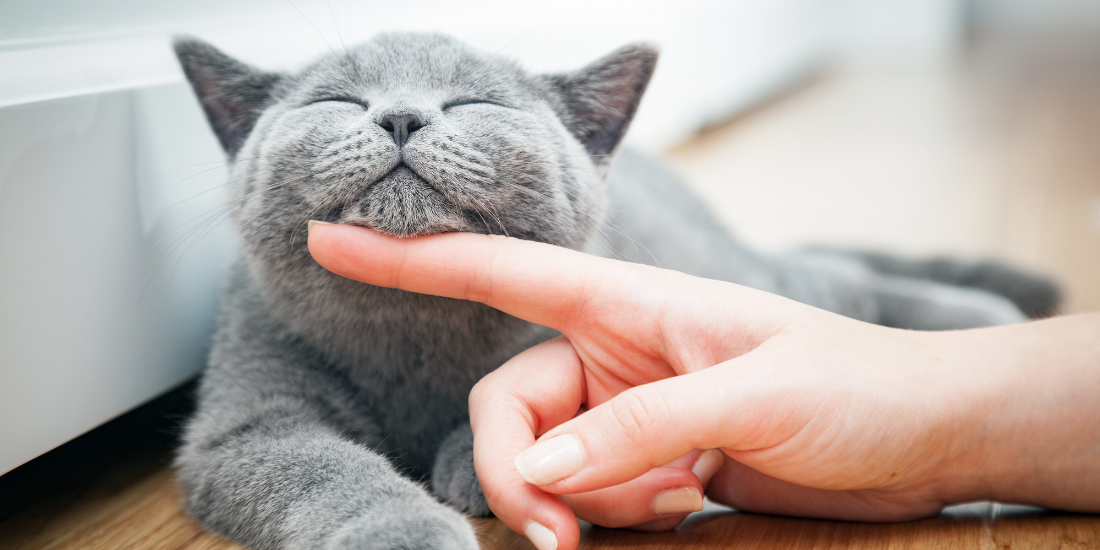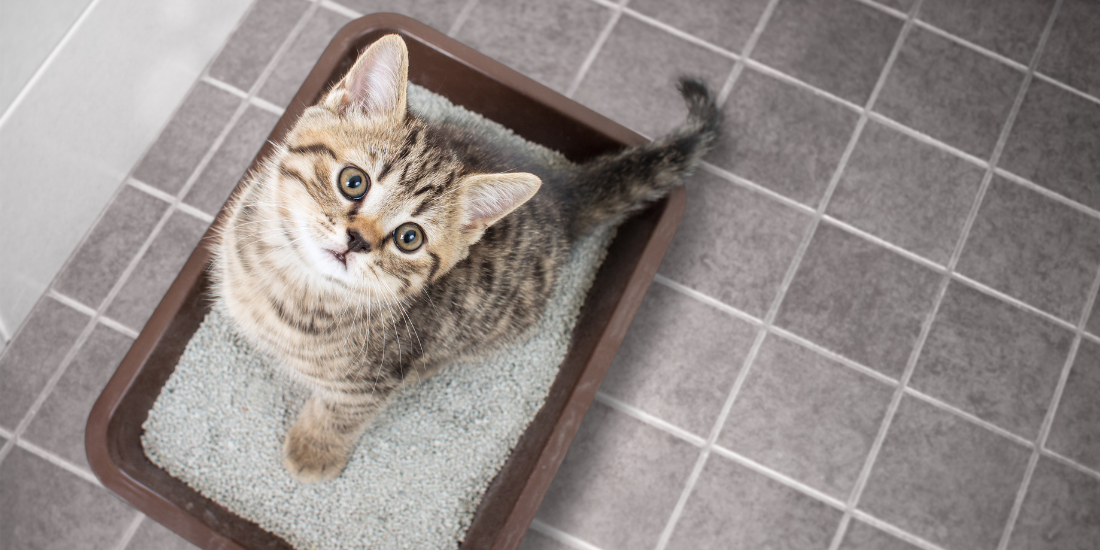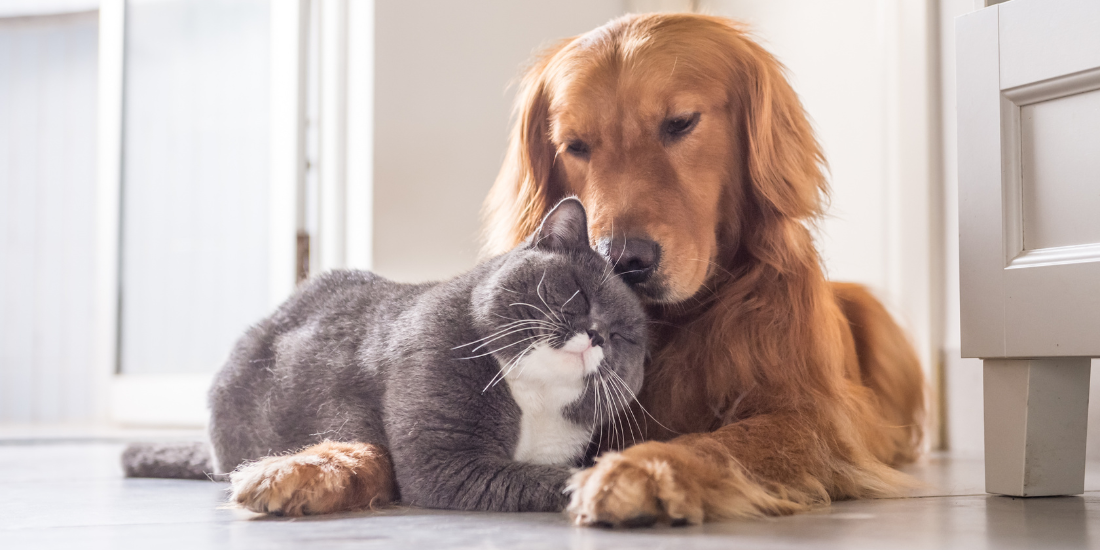
Cats are known for their elegant coats, but shedding can sometimes become a hassle for pet owners to manage. Understanding why cats shed and how to control it can help keep your furry friend comfortable and your home clean. In this guide, we'll explore the reasons behind cat shedding and provide practical tips to reduce it.
Why do cats shed?
Cats are natural shedding machines! It's their way of keeping their coats in tip-top shape. You see, shedding isn't just about getting rid of old, dead fur. Nope, it's a whole process that helps cats keep their coats healthy, thick, and oh-so-shiny. When they shed, they're making room for fresh, new fur to grow back in, ensuring their coat stays as fabulous as ever. So, next time you're finding a fur tumbleweed in the living room, just remember—it's all part of the cat grooming magic!
Potential causes of cat shedding
Alright, fur parents, let's get down to the nitty-gritty of why your cat might be shedding. From allergies to pesky fleas, ringworm, and even those metabolic mysteries, there's a whole bunch of reasons why your furry friend might be leaving a trail of fluff wherever they go. Plus, we can't forget about stress, boredom, and whether they're chowing down on the right food. And those breed-specific shedding tendencies—because some cats are just born to be shedding superstars.
Poor nutrition
Your cat's nutrition isn't just about filling up their bowl—it's about keeping their coat in tip-top shape. When their diet falls short on essential nutrients, their fur suffers big time. Picture this: dull, dry fur that sheds more than you'd like. Not exactly the catwalk-ready look we're aiming for, right? That's why it's crucial to serve up a balanced diet loaded with all the good stuff—think top-quality proteins, carbs, fats, and a whole bunch of essential vitamins and minerals. We're talking about giving them the building blocks they need to maintain healthy skin and a shiny coat. So, next time you're filling up their food bowl, remember that what's inside matters just as much as what's on the outside.
Boredom and stress
In cats, boredom and stress can manifest as a phenomenon known as psychogenic alopecia—excessive licking that can have detrimental effects on their coat.
When cats find themselves in situations of heightened stress or boredom, their coping mechanism often involves engaging in compulsive grooming behaviours. This excessive grooming can extend beyond the typical self-care routine, leading to relentless licking that may irritate their skin and result in conspicuous patches of hair loss. Not only does this behaviour compromise the integrity of their coat, but it also disrupts the natural shedding process, potentially exacerbating shedding abnormalities.
The incessant grooming may lead to discomfort, inflammation, and even skin infections, further complicating the issue. It's crucial for pet owners to recognize these signs of stress or boredom and take proactive measures to address the underlying causes to prevent the onset of shedding-related complications.
Breeds
When it comes to shedding, different cat breeds have their own unique tendencies. Take long-haired beauties like Persians and Maine Coons, for example. With their lavish coats, it's no surprise that they tend to shed more compared to their short-haired counterparts. And short-haired breeds like Siamese and Russian Blues generally shed more moderately.
However, it's not just about the length of their fur. Factors like hair follicle density and genetics also play a significant role in determining shedding intensity. It's worth noting that shedding patterns can vary even within breeds, with some furry friends shedding heavily during seasonal changes like spring and autumn.
By grasping these breed-specific shedding tendencies, cat owners can implement tailored grooming routines and care strategies to keep shedding in check and maintain their feline companion's coat health.
Medical conditions that can contribute to cat shedding
Just like us humans, cats can experience a range of health issues that may manifest in their coat health and shedding patterns. From pesky allergies to bothersome parasites, these medical conditions can wreak havoc on your cat's fur game.
Allergies
Allergies can really shake up the shedding routine for our feline friends. Imagine your cat dealing with relentless itching and scratching triggered by allergies to specific foods, pesky fleas, or environmental factors. This incessant scratching not only leads to discomfort but can also result in noticeable hair loss and thinning of the coat. Allergies tend to stir up skin irritations and reactions, ultimately causing shedding to spiral out of control.
Fleas and other parasites
When cats become infested with fleas, ticks, mites, or lice, their skin goes into overdrive with allergic reactions, prompting non-stop scratching and biting to find relief. Unfortunately, this constant scratching can lead to visible hair loss and a thinning coat.
To make matters worse, some parasites like fleas can even carry diseases that take a toll on your cat's overall health and coat condition. Dealing with these unwelcome guests not only causes discomfort but also exacerbates shedding issues due to the skin reactions they provoke.
Therefore, it's crucial to tackle flea and parasite problems head-on to restore your cat's comfort and keep shedding under control, ensuring they stay happy, healthy, and looking their best.
Ringworm
This pesky fungus can wreak havoc on your cat's coat, leading to troublesome hair loss and thinning. It feasts on keratin, a protein found in the skin, nails, and hair of your beloved pet. As the fungus spreads, it latches onto hair follicles, causing damage and inflammation that result in hair breakage and a thinning coat. The presence of ringworm spores only adds fuel to the fire, making it even tougher for your cat to maintain a healthy coat. With ringworm infections, it's a constant battle to keep shedding at bay, as the condition takes its toll on your cat's comfort and coat health.
Metabolic disorders
When it comes to shedding, metabolic disorders can significantly impact your cat's coat health. These disorders can result in your cat’s body struggling to regulate essential minerals like magnesium and calcium, leading to hypomagnesaemia and hypocalcaemia. And they don't just stop at affecting internal processes; they also take a toll on your cat's skin and coat condition.
With metabolic stress in the mix, shedding becomes more than just a nuisance—it becomes a symptom of a deeper issue. That's why managing these conditions is crucial to maintaining your cat's coat health and preventing excessive shedding.
Cats that don’t shed
Not all cat breeds are created equal with shedding. Breeds like the Cornish Rex, Devon Rex, and Sphynx, known for their minimal shedding tendencies. The Cornish Rex sports short, curly fur that sits close to the body, reducing the visibility of shedding. Similarly, the Devon Rex boasts thin, curly fur across its body, which contributes to its minimal shedding characteristics. Now, the Sphynx breed stands out for its unique feature - a seemingly absent fur coat due to a mutation in the KRT71 gene, rendering it a non-shedding breed. These breeds are a perfect match for individuals seeking feline companions with low shedding requirements, making grooming routines a breeze.
How to control cat shedding
Keeping your cat's coat on point is all about mastering the art of shedding prevention. With a little insider knowledge from the experts, we're diving into strategies for keeping your feline friend's fur game strong. Let's roll up our sleeves and tackle shedding like the pros we are!
Consult your veterinarian
Before starting any shedding reduction efforts, consult your vet to rule out any underlying medical conditions that may be contributing to excessive shedding.
Foods to reduce cat shedding
When aiming to maintain your cat's coat health and minimise shedding, diet plays a crucial role. Opt for high-quality cat foods specifically formulated to support skin and coat health. Look for ingredients rich in lean proteins such as chicken, lamb, or salmon, which provide essential amino acids necessary for healthy fur growth.
Additionally, prioritise foods containing omega fatty acids, like omega-3 and omega-6, as these nutrients help nourish the skin and maintain a shiny, lustrous coat. By selecting cat foods with these key nutrients, you can effectively support your cat's overall coat health and reduce shedding.
Hill's Science Diet
Packed with natural fibre technology, this Urinary Hairball Control range formula works wonders in reducing hairball formation, keeping your cat's coat sleek and shedding at bay. But that's not all – it's also loaded with the optimal level of magnesium to ensure your cat's urinary system stays in tip-top shape. And let's talk about that immune system boost! Thanks to clinically proven antioxidants, your feline friend will be fighting off those pesky illnesses like a champ. Plus, with high-quality ingredients and no artificial flavours or preservatives, this cat food is not only delicious but also ensures your cat stays healthy and happy.
Hill's Science Diet Sensitive Stomach & Skin dry cat food is formulated to promote optimal digestive health while nourishing skin and promoting a glossy coat, this dry food is a game-changer. Packed with prebiotic fibre, it fuels your adult cat's beneficial gut bacteria, ensuring a balanced microbiome for lifelong health. Plus, with easy-to-digest ingredients, your feline friend's stomach will thank you as it processes nutrients quickly, making for easier stool pickup. But that's not all – this cat food is also enriched with vitamin E and omega-6 fatty acids to keep your grown cat's skin healthy and fur coat looking fabulous.
Designed to keep your grown cat's digestive system running smoothly, Hill's Science Diet Hairball Control Adult Dry Cat Food is a lifesaver for both you and your feline friend. Crafted with natural fibres, it helps reduce hairball formation comfortably, ensuring your cat stays happy and healthy. Enriched with vitamin E, omega-3, and omega-6 fatty acids, this dry kibble nourishes your cat's skin from within, promoting a luscious, fur-coat worthy of envy. Plus, with high-quality protein to support lean muscle maintenance, your cat will feel as good as they look.
Vetalogica Vitarapid Cat Skin and Shedding Daily Treats
Crafted with precision and care, Vetalogica Vitarapid Cat Skin and Shedding Daily Treats are more than just a tasty snack – they're a holistic solution for your cat's skin and coat health. Packed with natural ingredients like omega oils, vitamins, minerals, flaxseed, turmeric, and antioxidants, these treats work tirelessly to replenish skin oils and manage excessive shedding. With their quick-release formula, your cat can enjoy the full benefits of these nourishing ingredients in a convenient and delicious treat.
Royal Canin
Upgrade your cat's look with Royal Canin Hair & Skin Cat Food, packed with omega-3 and omega-6 fatty acids to amp up that skin and coat game. Designed for cats over 12 months old, this formula not only helps them maintain a sleek figure but also serves up the goods for healthy skin and luscious locks. And get this: with exclusive use of HAIR & SKIN CARE, you'll be seeing a major glow-up in your cat's coat in just 21 days.
Tackle cat shedding head-on while giving your furry pal's tummy some love with Royal Canin Veterinary Diet Gastrointestinal Hairball Adult Dry Cat Food. This powerhouse formula isn't just about shedding—it's all about gut health too. Whether it's dealing with an acute issue or managing a chronic condition, this precise blend has got your cat covered. And for optimal digestion, we recommend breaking up their meals into smaller portions. With a digestible formula and a fibre balance that includes prebiotics, this diet not only makes digestion a breeze but also keeps everything moving smoothly.
Optimum
Get ready to tackle shedding like a boss with Optimum Cat Adult Dry Food Chicken Furball! Packed with top-notch protein to give your kitty's coat the TLC it deserves, this formula ensures every nutrient counts. It's not just about shedding—it's about total wellness. Say goodbye to furballs and hello to a glossy coat with controlled mineral levels and digestion aids like whole grains and beet pulp. Plus, antioxidants amp up natural defences, while goodies like arginine and vitamin E keep your cat's heart happy. And with joint support thrown into the mix, your feline friend will be strutting their stuff in no time.
Foods to avoid
When it comes to tackling shedding in cats, steering clear of certain ingredients in their food is key. Check out these no-go ingredients:
Cheap fillers
Don't settle for cat foods loaded with cheap fillers like corn, wheat, and soy. These ingredients might bulk up the food, but they aren’t optimum for your cat's health and can even trigger skin issues that lead to shedding.
Artificial colours and flavours
Give those cat foods with artificial colours and flavours the boot. They offer zero value in terms of nutrition and could even mess with your cat's well-being. Opt for cleaner formulas that help your cat's skin and coat stay in top shape, shedding less fur in the process.
Allergens
Wave goodbye to potential allergens lurking in your cat's food. Ingredients like wheat, soy, grains, and gluten can stir up allergies that ramp up shedding. Even certain proteins can be shedding culprits. Check those ingredient labels and consider switching to novel protein sources like lamb or bison to keep shedding at bay.
Cat stress relief
Ease your cat's stress, especially during times of change or commotion, as stress can trigger excessive shedding. To maintain a serene atmosphere for your cat, consider implementing the below strategies:
Minimise changes
Let's keep things steady for your furry friend. Cats thrive on routine, so sticking to a consistent schedule can work wonders in keeping stress levels low. By maintaining a predictable environment, you're giving your cat the stability they crave.
Create safe spaces
Every cat needs their own little hideaway. Provide cosy nooks and crannies where your cat can escape from the hustle and bustle of the household. Whether it's a plush cat bed or a secluded corner, make sure they have a spot to call their own.
Interactive play
Time to get playful! Engage your cat in interactive play sessions to keep them mentally sharp and physically fit. A little game of chase or a dangling toy can do wonders in reducing stress and anxiety.
Calming pheromones
Consider using pheromone diffusers or sprays to create a zen-like atmosphere for your cat. These magic potions mimic natural calming pheromones, helping your feline friend stay cool, calm, and collected.
Comforting environment
It's all about creature comforts. Make sure your cat's space is decked out with all the essentials for a purrfect environment. From plush bedding to enticing toys and scratching posts, give them everything they need to relax and unwind in style.
Regular grooming
Let's dive into the world of grooming! Regular brushing is the cornerstone of a healthy coat for your feline companion. Not only does it eliminate pesky loose fur, but it also aids in the distribution of natural oils, promoting a vibrant and glossy coat.
Regular grooming isn't just about aesthetics—it's about keeping shedding in check and maintaining your cat's overall health. By brushing your feline friend regularly with a cat shedding brush, you're not only banishing those annoying fur tumbleweeds but also preventing dirt, debris, and unwanted guests from hitching a ride on their fur.
To optimise your cat's grooming routine and keep shedding at bay, it's essential to understand the brushing frequency based on your cat's coat type:
Short haired cats
Even the sleek and stylish short-haired cats need a grooming session to keep up their impeccable appearance. With their weekly brushing routine, not only do they shed less, but they also maintain that enviable shine that turns heads. Plus, it's a purrfect chance for some quality bonding time with your feline pal—just don't be surprised if they start strutting their stuff with newfound confidence afterward!
Long haired cats
For those majestic fluffballs with long coats, daily grooming isn't just a chore—it's a grooming must! By dedicating some time each day to brush them, you're not only keeping their fur fabulously free from tangles and mats but also ensuring they're the picture of purrfection. With each stroke, you're not just grooming; you're pampering your cat like the royalty they truly are.
Hairless cats
Despite their lack of fur, Sphynx cats require regular care to keep them healthy and comfortable. Although they don't shed fur, they do shed dander. They need weekly grooming to maintain their skin's health and cleanliness.
Create a fur-friendly space
Create a dedicated space for your cat, complete with a bed and a cat tower. This designated area not only provides your feline friend with a comfortable retreat but also serves as a strategic tool to manage shedding in your home. When your cat has their own special spot, they're more likely to spend time there, reducing the spread of shed fur throughout your living space. This containment strategy makes cleanup more manageable and helps keep your furniture and floors fur-free. By implementing this simple solution, you're not only enhancing your cat's comfort but also minimising the impact of shedding on your home. It's a win-win situation for both you and your furry companion!
Keep your cat hydrated
Ensuring your furry friend stays hydrated is key to maintaining a luscious coat and minimising shedding. Hydration not only keeps their skin supple but also helps regulate their natural shedding cycle. By providing constant access to water, you're encouraging hydration, which in turn promotes healthier skin and reduces excessive shedding.
To up the hydration game, consider incorporating wet food into their diet or investing in a cat water fountain.
These tricks can boost water intake and further contribute to a sleeker, shed-free coat.
How to identify excessive shedding in your cat
When it comes to recognising if your feline friend's shedding is getting out of hand, it pays to stay sharp and observe key signs and behaviours.
Increased Hair Loss
To understand if your cat's shedding is beyond the norm, monitor the amount of hair you're finding in your cat's usual hangouts and your home. If you're constantly finding more fur around than usual, it could be a signal to dig deeper.
Changes in Grooming Behaviour
Cats that excessively groom themselves, leading to bald patches or irritated skin, may be experiencing abnormal shedding. Excessive grooming can be a sign of stress, allergies, or other underlying issues causing increased shedding.
Skin Irritation or Bald Spots
Take note of any unusual skin conditions such as scaly patches, bald spots, or signs of irritation, as these could be indicators of abnormal shedding due to underlying health issues like allergies or infections.
Dull or Patchy Fur
Be on the lookout for any changes in the appearance or texture of your cat's fur. A lacklustre or patchy coat could be a sign of health issues contributing to excessive shedding.
When to call the vet
If shedding is accompanied by other concerning symptoms like frequent scratching, weight loss, or behavioural changes, it's wise to seek veterinary attention promptly. And if your cat displays signs of discomfort around the ears, it's best to consult a professional without delay.
It's clear that managing cat shedding is essential for both pet comfort and a tidy home. By delving into the intricacies of shedding causes and mitigation strategies, we empower pet owners to maintain their feline companions' well-being while keeping their living spaces fur-free.
Enjoyed This?
Explore more ....

Soothing Your Cat's Itchy Skin: Effective Treatments and Care

Litter Box Basics for Beginners: Tips Every Cat Owner Should Know

